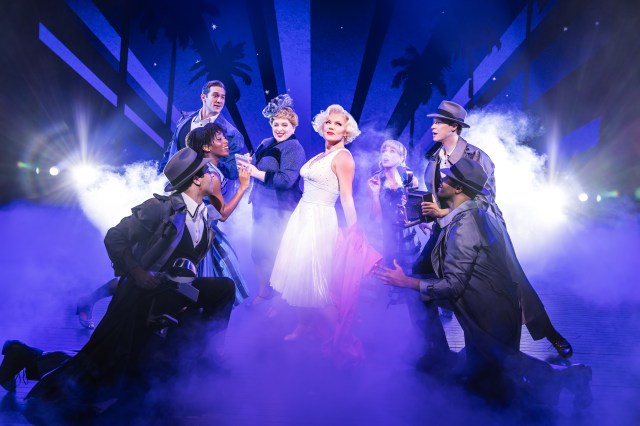Point-Counterpoint: Are Plays Scarier Than Movies?
Our critics debate which medium delivers the best Halloween adrenaline rush.
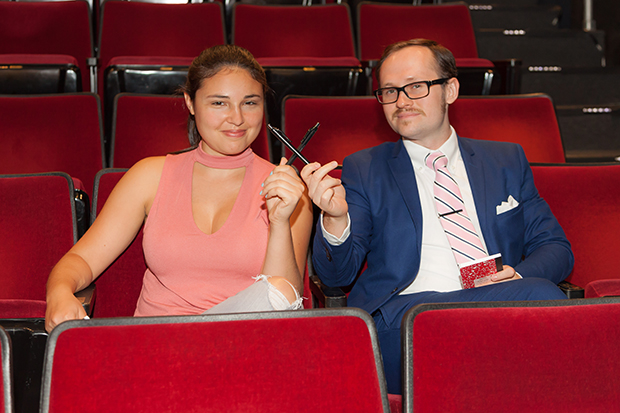
(© Seth Walters)
Halloween is that time of year when we go out of our way to experience a fright. While the vast majority of Americans turn to scary movies, should they be going to the live theater instead? Is the call coming from inside the house? Critics Zachary Stewart and Hayley Levitt debate which medium is scarier in our latest horrifying Point-Counterpoint.
Zachary Stewart: Happy almost Halloween, Hayley! When you're looking for a scare, do you turn to movies or the live theater?
Hayley Levitt: I'm rarely looking for a scare, but movies definitely have theater beat when it comes to the horror genre. I've never been scared by a play the way I am by movies.
Zach: Really? Not even when the vampire or serial killer or he-who-shall-not-be-named is right there in the room with you?
Hayley: #KeepTheSecrets, Zach!
But no. In the theater I have the security of knowing that nothing can really harm me, and that there's a line the actors can't cross. Take Tooting Arts Club's immersive Sweeney Todd, for example. Jeremy Secomb was the most terrifying Sweeney you can imagine, and would literally hold a blade to audience members' necks. But unless you think the production constructed an elaborate system of audience plants, you know that you're not going to see Sweeney slit this poor Sondheim fan's throat. In a movie, however, you can never be sure.
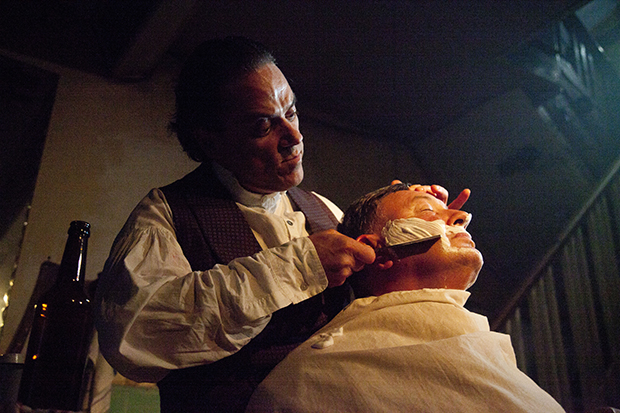
(© Bronwen Sharp)
Zach: Of course you can! You're separated from the action by a screen that provides a more secure barrier than even our American faith in liability litigation. And since everything is isolated in that screen, you know exactly where the killer is hiding. Not so in the case of haunted houses, which I'm going to take the liberty of claiming as a popular version of immersive theater. The ghoul can sneak up behind you. Not so in the movies.
Hayley: This all goes back to our debate about immersive theater, of which (as you well remember) I am very much not a fan. Part of that aversion stems from fear, but it's a fear of being accosted by a stranger, not a belief that an actual ghost is waiting for me around the next corner.
Zach: Perhaps, but even on the proscenium stage, a gifted actor can get you to suspend your disbelief in a more profound way than one can experience through film. I'll never forget seeing Daphne Rubin-Vega in Empanada Loca — if only because for the first several minutes, she delivered her lines completely in the darkness of what we were told was an abandoned room deep in the bowels of the subway. We could only hear Rubin-Vega's voice and trust that she was not going to murder us. It was one of the scariest things I've ever experienced.
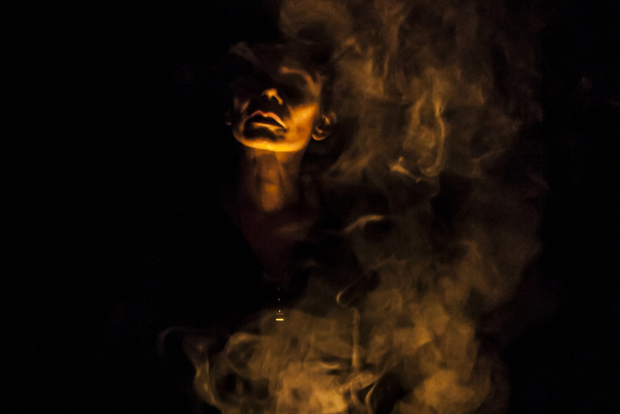
(© Monique Carboni)
Hayley: This is the one arena where the live aspect is more of a hindrance than an asset. Yes, Daphne Rubin-Vega is standing in front of you and has the literal capacity to cause you physical harm. But just like with Sweeney, you need to suspend a lot of disbelief to feel that Daphne Rubin-Vega might actually murder you. In a theater, you also have the ability to choose your own perspective. Design and direction do what they can to draw your eye to specific parts of the stage, but if you'd rather stare at the ensemble member in the corner, you are free to do that. There's no escaping Janet Leigh's terrified eyeball in the shower scene from Psycho.
Zach: You raise an important point, which is that film is undeniably the medium of choice for control-freak directors. Still, I find it even more impressive when an ensemble of performers is able to terrify us without the power of the final cut. Also, with film you can always pause or switch it off when it gets too scary. You and I have both seen enough shows with the exit behind the stage to know that isn't always an option in the theater.
Hayley: It's definitely impressive, but, like you said, we sit through enough shows to know how rare it is. The most recent attempts at horror on Broadway were 1984, American Psycho and Misery and none of these were particularly successful (I'll give American Psycho the most artistic credit of the three, even though it only ran for two months).
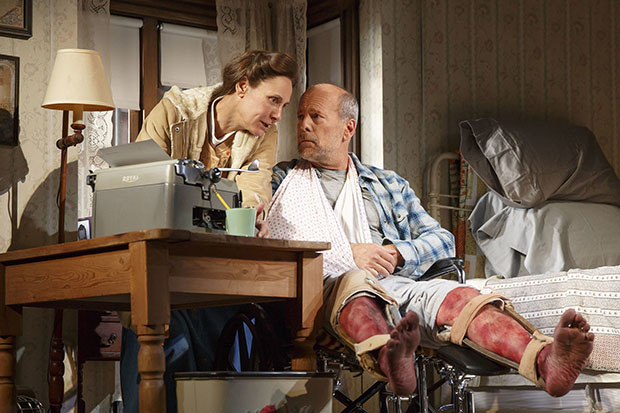
(© Joan Marcus)
Zach: Misery was the laugh-out-loud comedy of 2015. While I'll concede that it's easier to do a knife-wielding-psycho jump cut on film, the terror conveyed by theater tends to linger: like the trial scene in the recent revival of Oklahoma!, which made me fear the kind of small-town justice that still rules so many communities. Or Rags Parkland Sings the Songs of the Future, which makes us all feel what it would be like to be an outlaw under an authoritarian government. More than creepy nuns and slender men, this is what ought to keep Americans up at night.
Hayley: You're right, theater is much better at planting seeds of philosophical horror than immediate visceral terror. But unless Oklahoma! is a widely misinterpreted Rodgers and Hammerstein thriller, that's a different conversation.
However, I do think you're on to something. Look at the Grand Guignol – the apex of live theatrical horror that existed in Paris from 1897-1962. It put on the most gruesome, salacious, graphic spectacles and it was a hugely popular form of entertainment – until it wasn't anymore. And I think that has a lot to do with the tastes that evolved with technology. If you're looking for convincing, jump-out-of-your-chair horror, you don't go to the theater, you go to the movies. Theater is the place you go for the slower burn.







